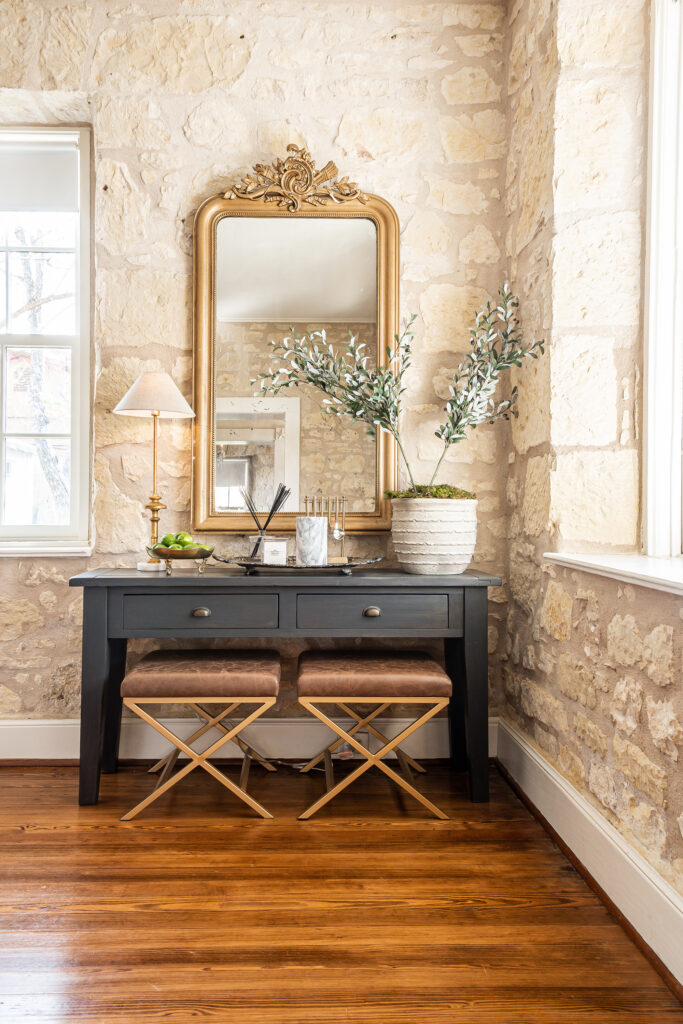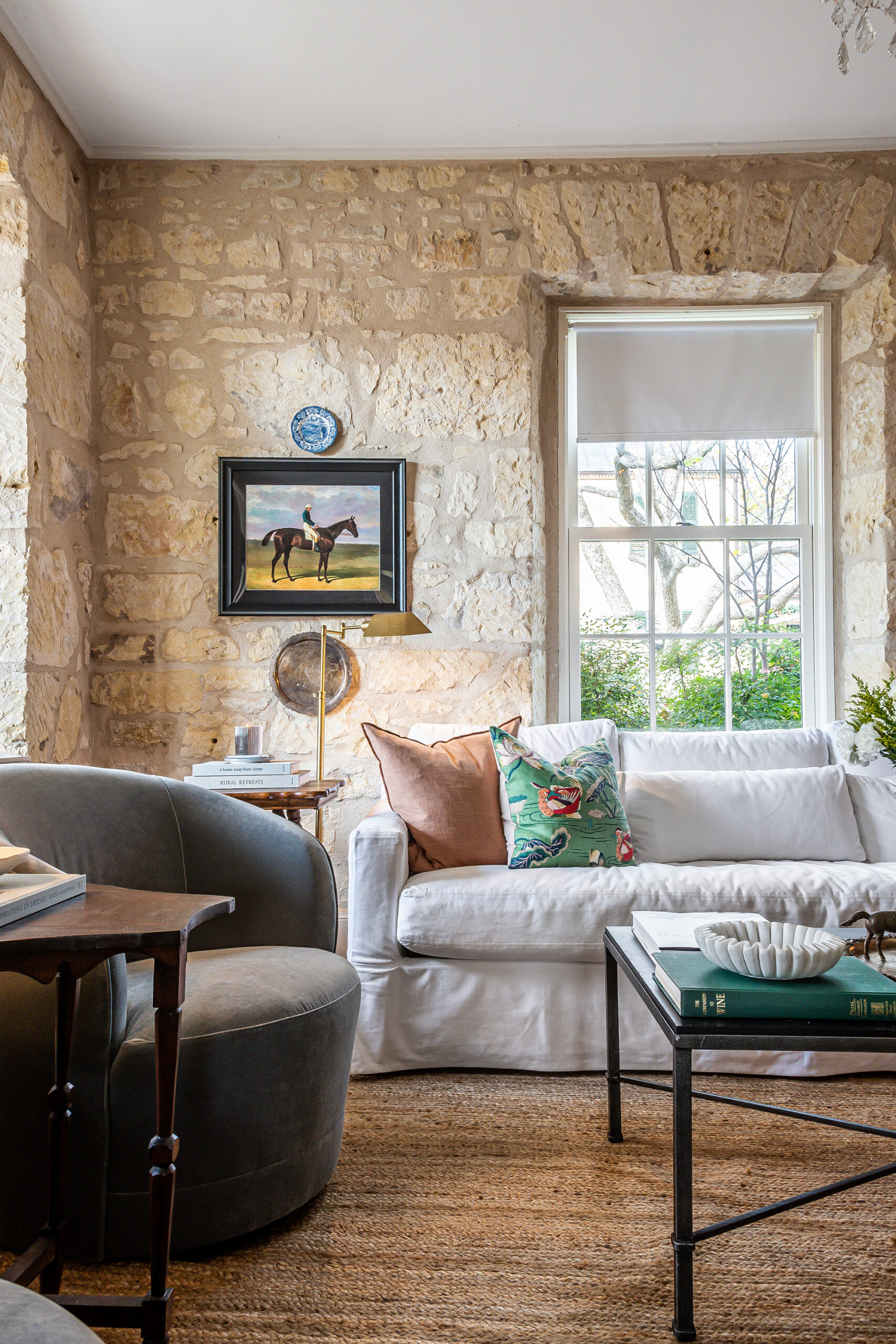One doesn’t have to look far around the Hill Country to see the impact the yellow and white hues of local limestone has in shaping the look and feel of the region. Homes, businesses and landscape features made from the sedimentary rock dominate the area, and for good reason.
“Stone is much harder to work with than with wood, but it lasts longer,” said Daniel Hall, senior project manager for TX Limestone Homes in Fredericksburg. “There is a lot of benefit to stone, longevity wise.”
Stone is fireproof, water-durable, bug-proof, sound-proof, rot-proof, and acts as thermal insulation, an important factor with the Texas weather extremes.

Stonemason Cosme Aguilar has twenty-three years of experience with his company, Cosme Masonry Construction, LLC, and works with all types of stone. He said limestone is by far the most popular. “We use limestone in eighty percent of the new houses we build,” he said. Aguilar said his customers like it for its sturdiness and the antique feel it has, especially when compared to many of the historic homes and buildings in the area. That, and it’s more affordable. “There is about a $2 difference per square foot (compared to other stone products),” he said.
“Since Texas offers a plethora of limestone, our costs are guaranteed to remain Stable,” Hell said of people building homes who prefer that natural, aged aesthetic of the limestone. “They like the old buildings downtown on Main Street,” he said. “Like many nineteenth-century buildings in Fredericksburg and throughout the Texas Hill Country, we build integrated stone walls similar to the early construction ideas of the late 1800s and early 1900s.”
Rode Walker, owner of Timber and Stone Builders, agreed that most clients want to maintain the historic, local feel when using stone. “We try to stay architecturally correct for the Hill Country,” Walker said.
The homebuilders said customers select the color and cut of the stone to match their preferences but noted that most people want stone as white as they can get it. “We use white and cream colors and some browns,” Walker said. “We stay away from oranges, and we don’t use any yellows.”
There are different types of limestone to select from depending on the customer’s preference. The most common is Austin limestone, largely quarried from mines near Austin. It is a soft stone and somewhat porous. A staple in the Hill Country, it is often white, yellow or a reddish brown in color.
Lueders limestone is a denser stone and ranges from a charcoal gray to a caramel brown in color. It is usually imported from north of Abilene. “My mason gets it (limestone) from a couple of local suppliers,” Walker noted.
Other common stones used in local construction include flagstone and sandstone. Flagstone is mostly a reddish-brown flat stone that is often used in landscaping, walkways, pool areas and patios.
Sandstone’s hardness varies from hard to soft depending on its mineral content. The softer varieties are easily carved and shaped in decorative ways. Sandstone comes in a wide range of colors from gray to red, yellow and white and is used in everything from flooring and building facades to walkways and artwork.


